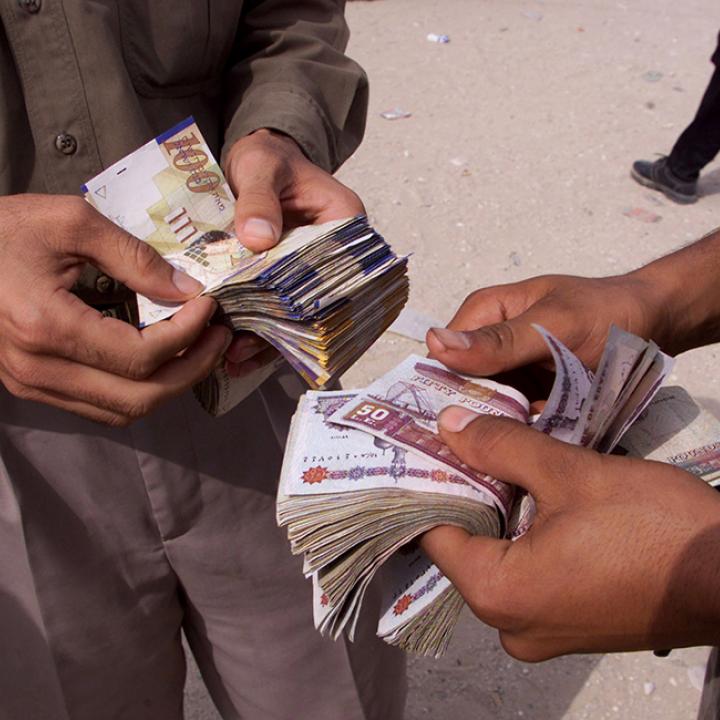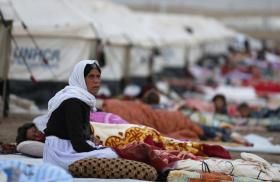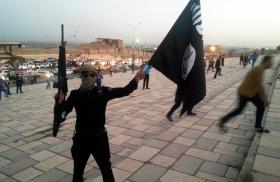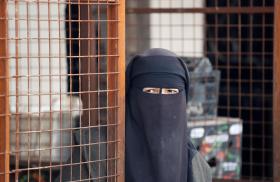
- Policy Analysis
- PolicyWatch 2714
The Evolution of Terrorism Financing: Disrupting the Islamic State

Part of a series: Counterterrorism Lecture Series
or see Part 1: U.S. Efforts against Terrorism Financing: A View from the Private Sector
Watch a conversation with the Treasury Department's top coordinator for combating terrorist financing as he explains how Washington is countering the Islamic State's wealth and fundraising.
On October 13, Daniel Glaser, the Assistant Secretary for Terrorist Financing in the Treasury Department's Office of Terrorism and Financial Intelligence, delivered the latest address in The Washington Institute's long-running Stein Counterterrorism Lecture Series. The following is a rapporteur's summary of his remarks.
The Treasury Department faces a unique challenge in countering the finances of the Islamic State of Iraq and the Levant (ISIL). While traditional counter-terrorist financing focuses on cutting terrorist financiers off from access to the global financial system and isolating terrorist organizations from their major source of funding, ISIL's ability to finance itself internally presents a qualitatively different challenge that requires a qualitatively different approach.
ISIL's wealth mainly comes from three sources. The first of these is the oil and gas in its territory, the sale of which generated about $500 million in 2015, primarily through internal sales. The second is taxation and extortion. As a territory-holding entity, ISIL levies various taxes and fees on the population under its control, equaling about $360 million in 2015. Third, when ISIL captured Mosul in 2014, it was able to plunder more than $500 million in cash from bank vaults. This, however, was a nonrenewable source of financing. In all, the vast wealth that ISIL has raised from these sources far outweighs external financing and other illicit activities.
Given the significance of territory to ISIL financing, the problem lends itself to a military solution. The Global Coalition to Counter ISIL launched an air campaign in November 2015 named Tidal Wave II, which targets ISIL's ability to extract, refine, and transport oil and gas. This campaign has substantially decreased ISIL's oil profits from its territory.
As ISIL loses access to territory, and thereby oil, it is increasing taxes on the local population. Yet its ability to generate revenue through taxation is also limited because the funds flowing into its territory are limited. For some time, the Treasury Department has been working with the Iraqi government to reduce liquidity in ISIL-held areas. About a year ago, Baghdad stopped sending government salaries into these areas, instead holding them in escrow. Previously, it had been sending about $2 billion per year into ISIL territory. Even with conservative estimates of a 10 percent tax rate, that represented significant income for ISIL. The coalition has also conducted airstrikes on ISIL bulk-cash sites, destroying untold millions of dollars.
These measures are having an impact -- the group has been experiencing financial distress. In late 2015, ISIL leaders in Raqqa, Syria, reduced the monthly salaries of all fighters in the province by 50 percent, and they certainly were not the first to be affected by the group's belt-tightening efforts. Internal corruption is also on the rise, spurring leaders to launch anticorruption campaigns. Arbitrary fines have increased as well, and taxation has become heavier. All of these developments are clear signs of distress as the group scrambles to make up the money it has lost.
Nevertheless, ISIL's coffers will never be completely emptied, so Treasury is continuing its efforts to prevent the group from moving and using its money. This effort starts with the Iraqis. Treasury has been working very closely with the Iraqi government, which is taking the issue quite seriously. Approximately ninety Iraqi bank branches were operating in ISIL territory when the group first took control, but Treasury has worked with the Iraqis to cut these branches completely off from their headquarters, making it more difficult for ISIL to access the financial system.
Yet the main concern in Iraq is ISIL's exploitation of exchange houses, of which there are around 1,900 -- far too many to effectively regulate. In the long term, Iraq needs to shrink this sector to bring the number of exchange houses down to a level that can be reasonably overseen. The challenge in the short term is what to do about exchange houses within ISIL territory. The Central Bank of Iraq has released a public list of more than a hundred such institutions, and Treasury has established active information-sharing arrangements with Iraqi officials to alert them of any suspicious exchange houses. Entities can be added to or removed from the list as territory is liberated. Financial institutions around the world need to consult this list to avoid doing business with any of the blacklisted exchange houses. Thus far, the Central Bank has blocked such houses from accessing millions of dollars, a clear sign of Iraq's commitment to the issue.
The Central Bank has also taken steps to improve the regulation of Iraq's financial system, adopting money-laundering and counter-terrorist financing laws and issuing regulations to implement them. In addition to taking extraordinary steps to ensure that banks in Baghdad are appropriately regulated, it has sent teams out to places such as Kirkuk in the Kurdish region to make sure there is a uniform anti-money laundering system in place. Going forward, the Iraqi government must make this more than just a Central Bank effort; law enforcement, the Finance Ministry, the Justice Ministry, and the security services all need to be involved. To encourage this all-of-government approach, the Treasury Department helped create the U.S.-Iraq Committee to Counter Terrorist Financing, which includes all of these stakeholders.
Although this work starts in Iraq, it certainly does not end there. Syria is a completely different issue set. Yet because the Syrian financial sector has been cut off from the international system for some time, it is a less attractive jurisdiction for ISIL to move funds. Informal financial networks connect Syria to its traditional regional trading partners, and Treasury engages with them about associated concerns. The Assad regime has also benefited ISIL through gas deals based on an exchange of services.
As Treasury continues to work closely with regional partners to ensure that ISIL does not gain access to local or global financial systems, it is crucial to note that military success will only increase the relevance of this work. As ISIL becomes less state-like and more of a dispersed global organization, it may become more reliant on the international financial system to raise and move money. The question then becomes: does it turn to external financing? There is no level of external financing that can make up for the billion dollars or more that ISIL can make while controlling territory like it does in Syria in Iraq. Even so, the move to a so-called "post-Caliphate" existence obliges the coalition to make an even greater effort to ensure that ISIL cannot rely on more traditional methods of terrorist financing such as foreign donors and exploitation of charities.
Outside Syria and Iraq, ISIL's various branches do not have the ability to generate their own resources the way ISIL does in its core territory. ISIL in Libya is not making money from oil there; it is focused on destroying the country's oil infrastructure rather than financially benefiting from it. There is also less wealth within the branches themselves -- for example, while Mosul's bank vaults held half a billion dollars in cash, ISIL forces in Sirte, Libya, have found only around $4 million. This is a qualitatively different problem. ISIL branches are able to self-finance to a degree through crime and extortion of the local population, and they still receive money from the ISIL core.
Other terrorist organizations operating in Iraq and Syria require close attention as well. Al-Nusra Front -- essentially al-Qaeda in Syria -- is a dangerous organization that poses a threat to the United States. It can extract a certain amount of wealth from the territory it controls, but not to the same extent as ISIL. This gets to Treasury's classic toolbox: working with partners to make sure terrorist organizations do not have access to the financial system. A lot of progress has been made toward this end in countries such as Qatar and Kuwait, but individual financiers continue to operate in the Gulf region, and this issue needs to be addressed urgently. Qatar's recent efforts to undertake criminal prosecutions of terrorist financiers are a real sign of political will to deal with this problem.
Other groups of concern include Hezbollah, which has Iran as its chief financier. Treasury strives to isolate Hezbollah from the global financial system, and it applauds Lebanese banks for their good work since the passage of the Hezbollah International Financing Prevention Act of 2015 (HIFPA). The group's access to the Lebanese financial system has been challenged in a way many never thought possible. On this matter, it is critical to differentiate between Lebanon and Hezbollah. HIFPA and the ensuing American enforcement measures are not an attack on Lebanon, but rather a move to counter Hezbollah financing. Yet Hezbollah receives the majority of its wealth from Iran, a revenue stream that is difficult to disrupt. In its dealings with Tehran, the Financial Action Task Force will likely continue to reject exceptions to its terror-financing laws, as it has in the past.
This summary was prepared by Maxine Rich.






